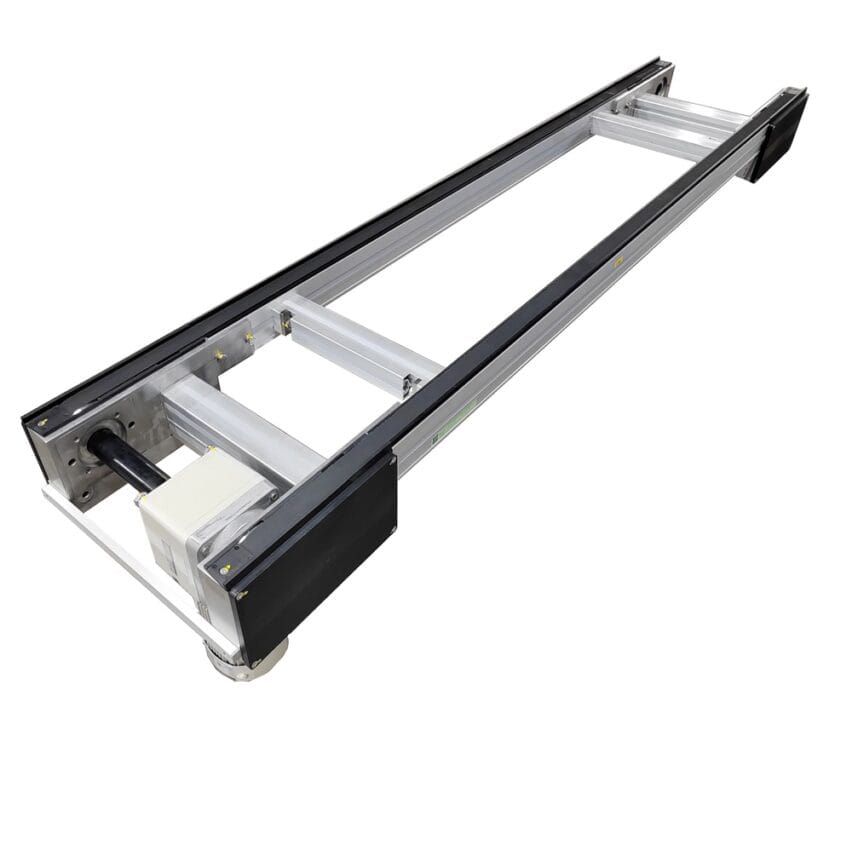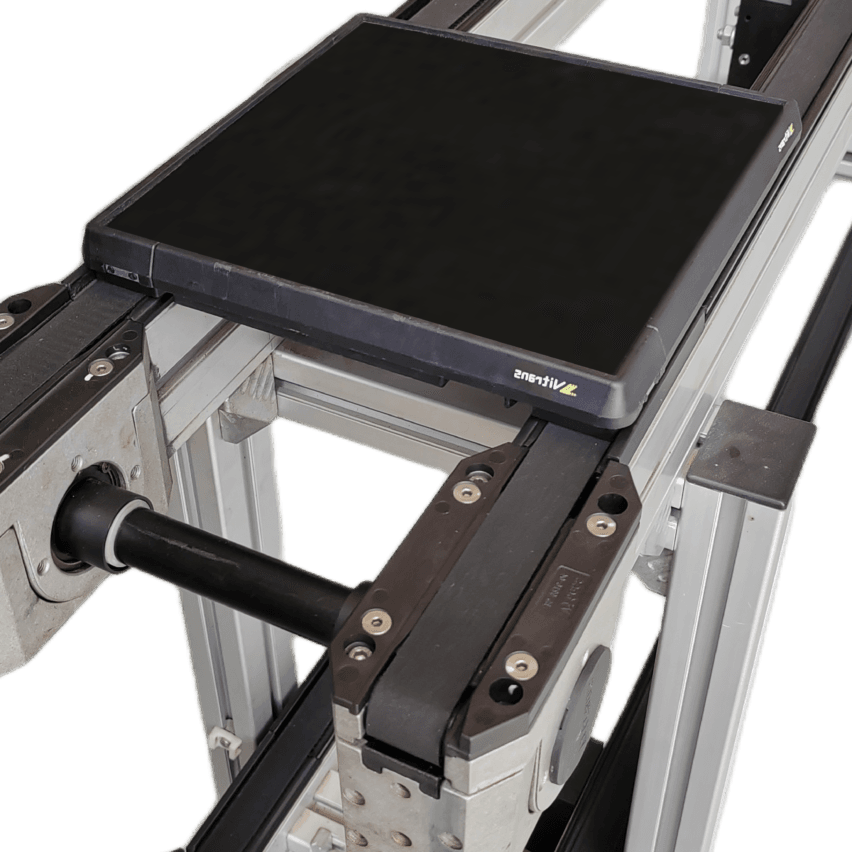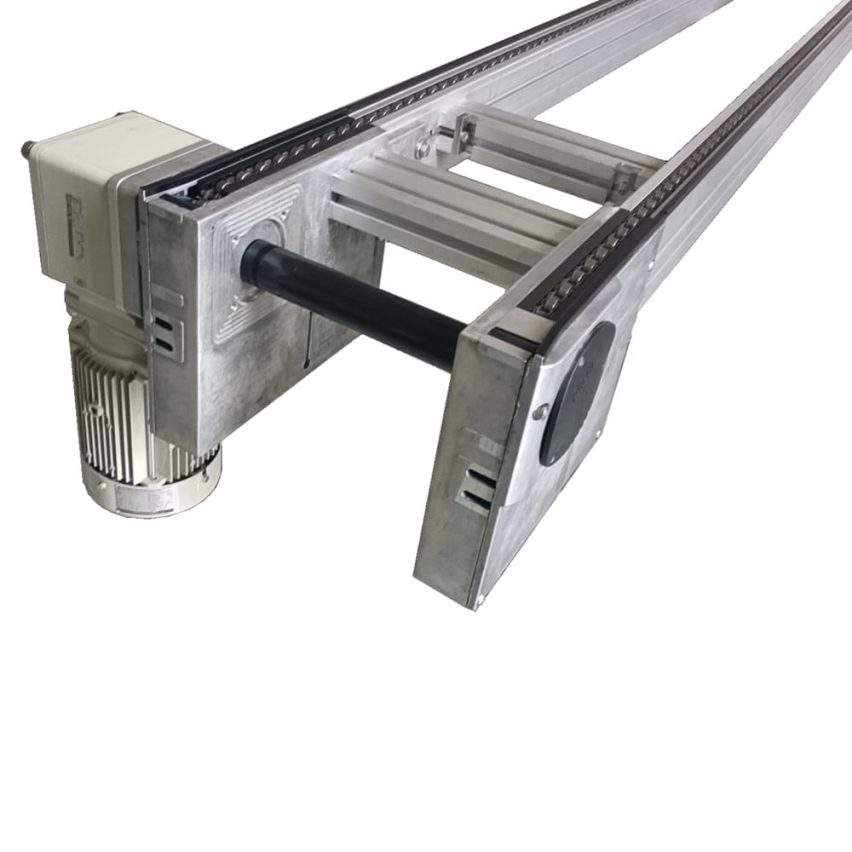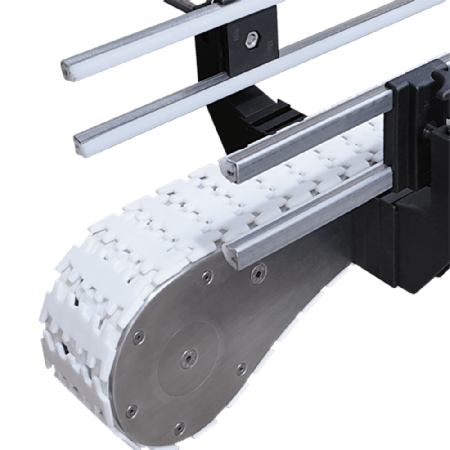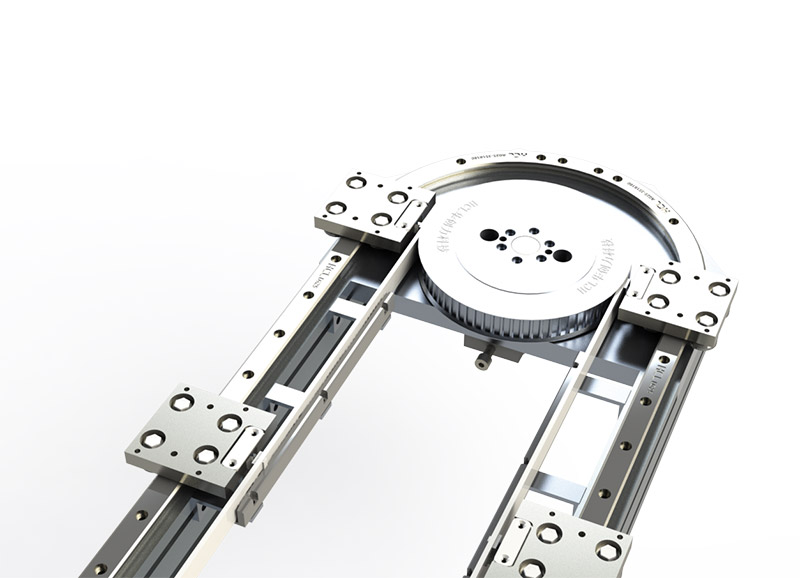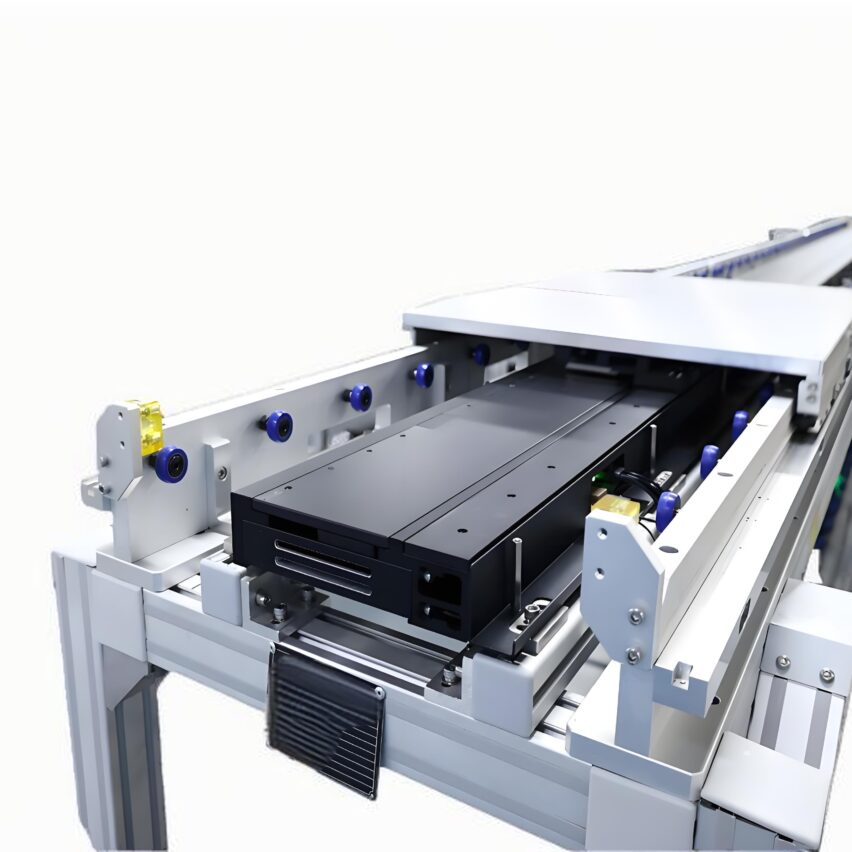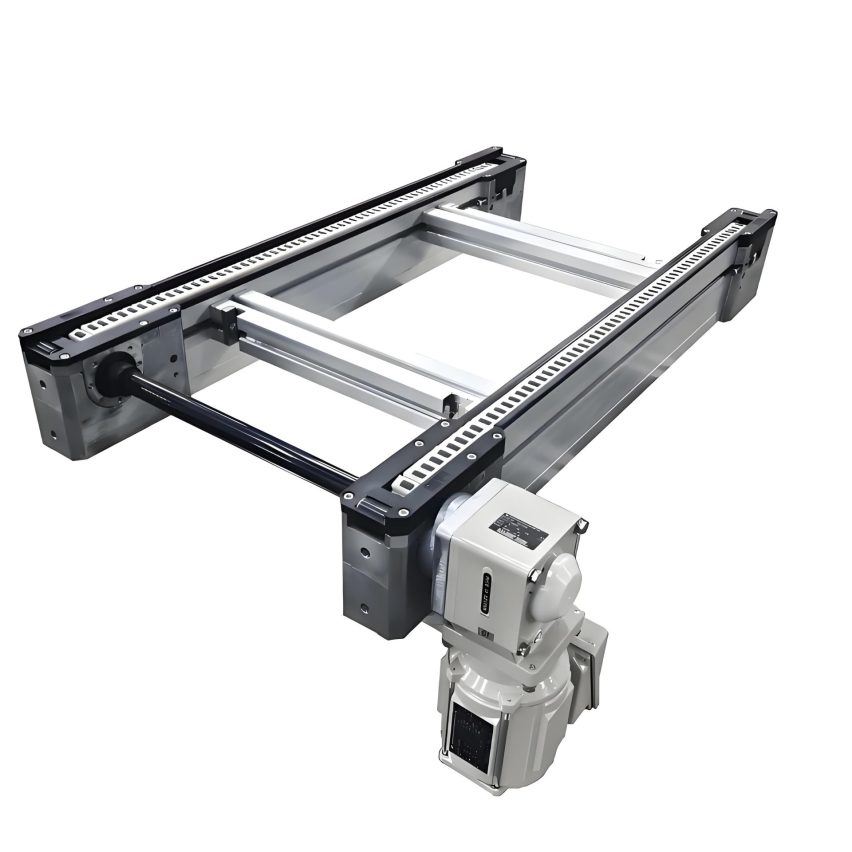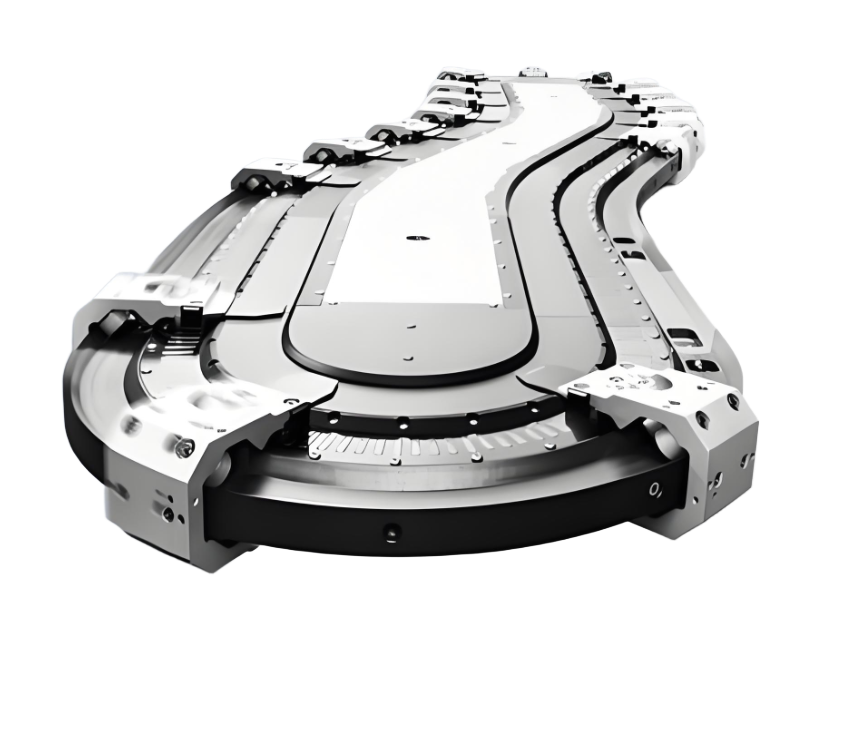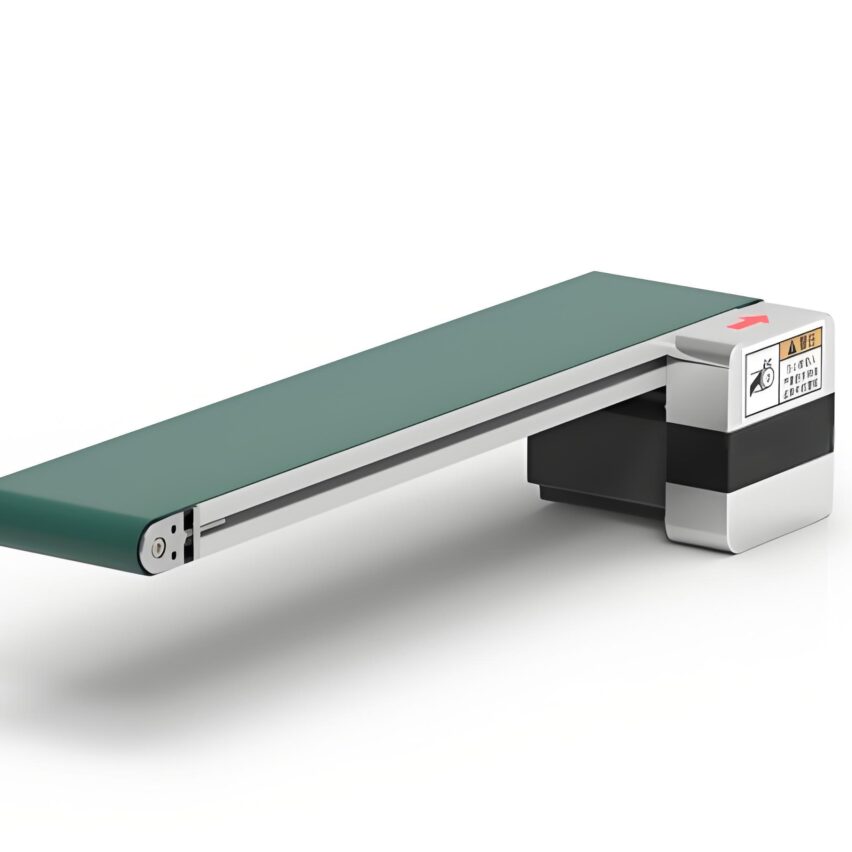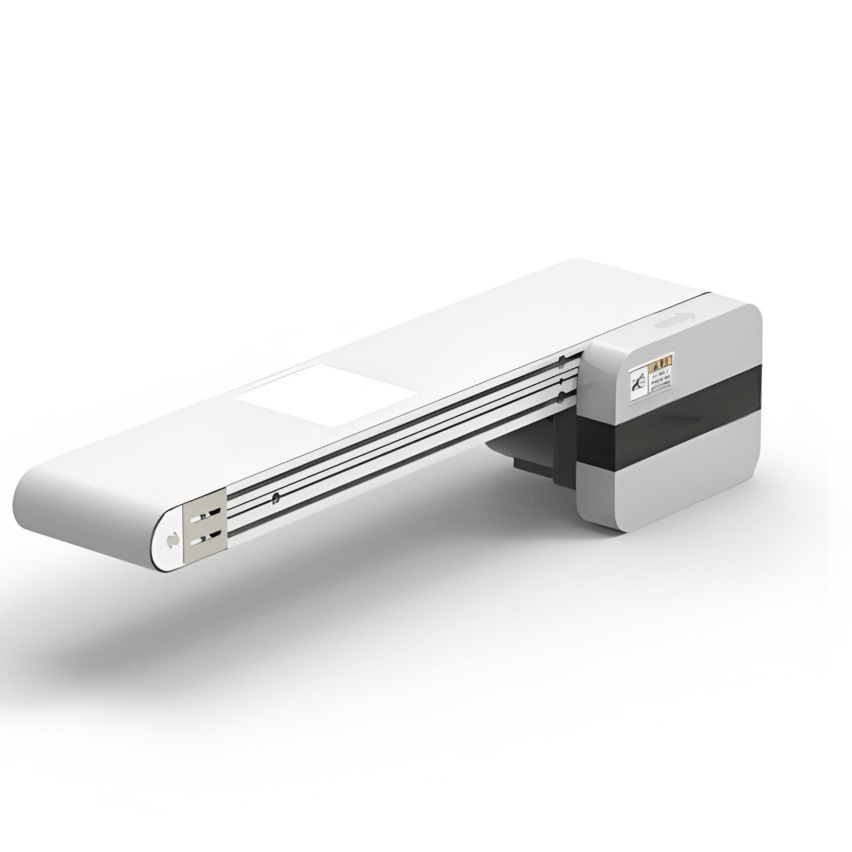I. Technology evolution: from mechanical drives to intelligent neural nets
Belt conveyor lines have evolved from pure material handling since their application in coal mines in the 19th century to the present day.Intelligent systems that integrate sensing, control, and decision-making. Its technological leap is reflected in three core breakthroughs:
- Driving architectural innovation: Conventional drum motors upgraded toPermanent magnet synchronous motor + frequency controlCombination, energy consumption reduced by 42% (Midea factory actual measurement)
- Materials Science BreakthroughsFood-grade PU/silicone tape replaces rubber, reduces risk of microbial residues by 95% and is dual FDA/EU approved.
- tribological reconstructionSelf-lubricating bearings with ceramic coated guideways reduce the friction coefficient to 0.05 and the synchronisation accuracy is ±0.5mm.
personal insight::The current industry over-pursues the conveying speed, but ignores the harmonic resonance to the loss of life. Sany Heavy Industry case shows: when the line speed from 6m / s down to 4.5m / s, bearing life extension 2.3 times, failure downtime reduction of 70% - this dynamic balance should become the golden rule of technology selection.
II. Core architecture: a sophisticated skeleton for intelligent systems
(i) Drive systems - the heart of power
- permanent magnet motorEnergy saving of 35% compared with asynchronous motors, start/stop response <0.5 sec.
- Dual mode transmission: Gearboxes for heavy-duty scenarios (torque >5000Nm), synchronous belts for light-duty (noise <55dB)
- energy return device: Average daily power supply from brake power generation is 210kWh, accounting for 15% of the total power consumption of the production line.
(ii) Conveyor Belt - Smart Skin
| Material Type | Applicable Scenarios | technological breakthrough |
|---|---|---|
| Steel Core Rubber Belt | Mining/steel (temperature resistance 150°C) | Nano-ceramic embedded layer for impact resistance |
| Anti-static PVC tape | electronic semiconductor industry | Surface resistance 10⁶-10⁹Ω |
| Transparent PU tape | food and pharmaceuticals | Microbiology Detection Window Design |
(iii) Perceptual networks - digital nerves
- Vibration Fingerprint Sensor: 7 days advance warning of bearing failure (99.2% accuracy)
- infrared thermal imager: Real-time monitoring of belt temperature anomalies (±0.5°C accuracy)
- RFID Material Tracking: Linkage with MES system, positioning accuracy ±10cm
III. Intelligent upgrading: a new paradigm for predictive maintenance
Digital twin preview platform
- Virtual Debugging Intercept 92% Mechanical Interference (Siemens Verification)
- Dynamic energy model optimisation: Ningde Times saves $1.27 million in annual electricity costs
AI Decision Hub
- Early warning system for clogging: prediction of the risk of clogging by means of an array of pressure sensors
- Adaptive speed regulation algorithm: Dynamically adjusts line speed according to work order volume (power saving 18%)
Exclusive dataTesla's Shanghai factory adopts intelligent belt line, the sorting efficiency exceeds 2,000 pieces/hour, and the error rate is only 0.3‰.
Fourth, the scene of the revolution: six industry pain points bursting
(i) Automotive Manufacturing - Mixed Line Intelligence Core
- Electromagnetic Accumulation and Discharge (EAD) technology: Model switching time compressed to 15 minutes
- Force-controlled guiding system: Body positioning accuracy ±0.1mm (measured by GAC)
- fig. values (ethical, cultural etc): Reduction of $27 million/year in line outage losses
(ii) Food medicine - aseptic transmission lifeline
- triple protection::
- Positive pressure wind screen barrier (8m/s wind speed to isolate particles)
- CIP In-Line Cleaning System
- Microbiological sensors with real-time alarms
- case (law): Reduction of maintenance cycle from 2 times per week to 1 time per quarter in Sanquan Food Factory
(iii) New photovoltaic energy - a critical path for carbon reduction
- Lightweight Carbon Fibre Bracket: Self-weight reduced by 60%, installation efficiency ↑40%
- Photovoltaic panel self-powered system:: Energy self-sufficiency in case of sufficient sunshine 35%
V. Green Manufacturing: A Three-Stage Path to Carbon Footprint Reconstruction
- Material Revolution: Recycled aluminium profiles (carbon footprint ↓53%) + biodegradable PU tape
- technological evolution: laser cladding remanufacturing, spare parts consumption ↓80%
- system optimisation: Digital Twin Drive Energy Model, Integrated Energy Efficiency ↑28%
Full-cycle economic modelling::
make a copy ofLCC = (Initial investment x 0.3 + Energy consumption x 0.5 + Maintenance x 0.2) / Years of operationPremium 1.5x premium for a high-end system that lendsEnergy consumption ↓42%together withFault ↓76%16-month payback
Self-questioning: penetrating the industry fog
Q1: Why is a 30-metre trip still sought after despite costing twice as much?
A: Core values inMillimetre flatness accuracy(±0.5mm vs. conventional ±2mm). Case study of Ningde Times confirms: precision improvement makes battery module alignment efficiency ↑30%, offsetting cost premium in just 11 months.Q2: How to guarantee 100,000 hours life in dusty workshop?
A: Triple protection system:
- Aluminium oxide ceramic coating(Hardness HV1500 anti-wear)
- Modular Quick Release Architecture(Maintenance time ↓70%)
- Self-cleaning V-Guides(Dust accumulation ↓85%)
Q3: Will it be fully replaced by Maglev?
A: Will formhybrid drive ecology: Maglev is good at precision positioning (e.g. <0.1mm scene), butThe heavy-duty sector (>2 tonnes) is still the home of beltlinesThe frontline programme has seen the emergence of a "maglev guide + belt drive" fusion architecture. Frontier solutions have emerged in the form of "maglev-guided + belt-driven" fusion architectures.When a conveyor line can convey vaccines in -50℃ cold chain environment and intelligently expand capacity during the double 11 flooding hours - industrial resilience and market elasticity finally reached a reconciliation on the smart belt. Carbon audit report of a photovoltaic enterprise reveals that: the annual carbon reduction per 100 metres of intelligent belt line is equivalent to 1.2 acres of forest carbon sequestration power, and the hundred-year paradox of black steel and green earth is being rewritten.
data traceabilityEnergy efficiency data in the text refers to the ISO50001 certification system, and the calculation of carbon reduction is based on the ISO14064 standard.

